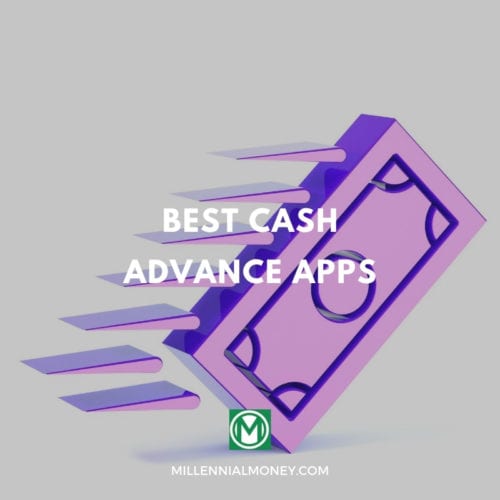Effective January 1st, 2024, Mint was shut down and integrated into Credit Karma. Mint users can still access several of the platform’s financial tools with a free Credit Karma account, but Mint is no longer be available.
There’s nothing worse than taking a look at your bank account at the end of the month and wondering where all of your hard-earned dollars went.
Yet, for many people, this is a regular occurrence because they lack visibility into their daily expenses.
The good news is that managing your personal capital doesn’t have to be difficult.
There are plenty of tools available that can get you under budget and on track to reach your savings goals.
Two such services that can help you in this regard are Mint and Quicken.
Let’s explore the differences between the two to help you determine whether either one is right for you.
Mint vs Quicken: Overview
What is Mint?
Think about Mint like your personal mobile financial dashboard. The personal finance app pulls data from multiple sources — including checking accounts, savings accounts, investment portfolios, retirement accounts, and credit cards — into a single and easy-to-use interface.
That way, you can get a bird’s-eye view of your personal finances in one place.
Mint is free and simple to set up and can be accessed over any PC, Mac, iPhone, iPad, or Android device.
Mint was launched in 2006. In 2009, Intuit purchased Mint for a cool $170 million.
Continue Reading:
What is Quicken?
Mint has a tough competitor in Quicken, which is one of the most comprehensive and well-established personal finance software solutions on the market.
Like Mint, Quicken started as a free online service under its former parent company, Intuit.
The service was discontinued in 2010 following Intuit’s acquisition of Mint and brought back as a subscription service when Intuit sold Quicken to H.I.G. Capital in 2016.
Quicken offers a robust set of personal finance tools that can be accessed via desktop budgeting software or mobile app.
Like Mint, these tools can be used to provide a complete picture of your personal financial situation.
Mint vs Quicken: Unique Features
Mint’s Unique Features
1. Budgeting Tools
You can’t create a realistic budget if you don’t know where your money is going — and this is where Mint really shines.
Mint provides direct visibility into your spending habits and credit card accounts over time, letting you identify patterns and identify areas of waste.
That way, you can update your budget as needed and get your finances in check.
For example, you may find that you’re eating out five or six times per month on average.
And maybe your budget only has room for one or two of those treats.
Using Mint, you can use this insight to shop more at the grocery store and load up on cheaper items.
Then you can turn around and invest the money you’d otherwise spend at a restaurant in securing your financial future.
2. Investment Tracking
It can be difficult to stay on top of multiple investment accounts — especially if you are working with different brokerage providers and retirement funds.
According to one recent study, the average consumer now has about five financial accounts. Suffice it to say that’s a lot of different platforms to hop between.
Mint pools all of your financial information together, enabling you to compare your portfolio to market benchmarks and track your daily progress from one location.
Mint also offers investment management solutions for both active and hands-off investors.
In addition, Mint can help catch hidden fees from 401k providers, brokerages, and financial advisors that you may not be aware of.
As I always say, hidden fees are one of the top wealth killers. Any service that’s looking out for your back here is worth checking out.
3. Bill Tracking
If you want to stay on top of your finances, it’s critical to avoid getting blindsided by things like cable, utility, and auto bills.
Forgetting about a bill is an easy way to get pulled into debt — especially if one of your favorite activities is buying random objects off of Amazon.
Good news: Mint sends you reminders that enable you to plan ahead so you can avoid missing payments.
You’ll also find out if your account balance is running low so that you can budget accordingly or negotiate with providers if needed.
4. Personalized Financial Advice
Mint also analyzes your financial situation and provides personalized financial tips, empowering you to make decisions that can positively improve your net worth.
This is a great feature because everyone’s finances are different.
A piece of advice that might help you transform your financial situation might not apply to someone else.
Getting personalized tips can be truly beneficial.
5. Free Credit Score Tracking
It’s a good idea to monitor your credit score on a regular basis, regardless of how you are using credit.
That way, you can find out instantly whether someone’s opened a fraudulent account in your name, and you can become familiar with the components that make up your credit score and work to optimize them on a continual basis.
Mint provides a variety of helpful details such as the average age of your credit, cash flow analysis, total credit usage, and total accounts, among other things.
And best of all, Mint doesn’t charge for this service.
Quicken’s Unique Features
1. Tiered Pricing Models
Mint makes the majority of its revenue through referrals, whereas Quicken charges customers for their services.
So, while you have to pay for Quicken, you can at least pick the package that is right for your individual needs.
Here is a breakdown of Quicken’s pricing models:
Starter: $34.99/yr
- Centralized account management
- Budgeting and bill management
- On-the-go management (web, desktop, and mobile)
Deluxe: $39.99/yr
- Everything in Starter
- Customized budgets
- Debt tracking and management
- Savings goals
Premier: $59.99/yr
- Everything in Deluxe
- Free online bill pay
- Priority customer support
- Simplified taxes and investments
Home & Business: $79.99/yr
- Everything in Premier
- Different categories for business and personal expenses
- Simplified tax deductions and profit loss tracking
- Custom invoices for email
Learn More:
2. Quicken Bill Pay
One of the major advantages that Quicken has over Mint is that you can not only track your bills, you can also pay them from the Quicken app if you are using Quicken’s Premier or Home & Business plans.
Quicken makes it fast and easy to pay bills and eliminates having to visit multiple websites or write numerous checks every month.
In an age where we all seem to sign up for a number of new accounts every week, this feature can be particularly useful.
3. Home Value Tracking
Another feature that’s unique to Quicken is their home value tracking solution, which can be accessed over the Premium and Home & Business plans.
This service can provide continuous updates about the market value of your home.
It’s something that all homeowners should use, especially when getting ready to sell or refinance your home.
4. TurboTax Integration
Quicken integrates directly with TurboTax, making it easy to populate data when preparing taxes.
You can also create tax reports. Who couldn’t use a little more efficiency in the tax-filing process?
Mint vs. Quicken: Budgeting Tools
Both services provide a powerful, accurate, and user-friendly budgeting service that enables users to see exactly where their money is going.
Quicken ultimately has the edge as it offers advanced features, like being able to export financial data into Excel or Quickbooks — which you can’t do in Mint.
Use Quicken if you want deeper control over finances.
🏆 Winner: Quicken
Mint vs. Quicken: Customer Service
Unfortunately, neither company offers phone support. So, if you like troubleshooting with live agents over the phone, you’ll have to look elsewhere.
Both services do offer access to agents over live chat, and Mint goes a step beyond with email service, which is helpful when problems arise.
As a result, Mint has a bit of an edge for customer service.
🏆 Winner: Mint
Mint vs. Quicken: Supporting Resources
Quicken offers a variety of educational resources, including a FAQ page, a Common Help Topics section, and the Quicken Community where you can connect with other users to solve issues.
Mint offers some useful free money tools, such as their Home Affordability Calculator and Loan Repayment Calculator.
These are nice touches, but Quicken still has the edge here.
🏆 Winner: Quicken
Mint vs. Quicken: Cost
Mint is a free service, meaning you won’t pay anything to use it. There aren’t even any hidden fees that you will have to worry about.
How can you beat that?
🏆 Winner: Mint
Mint vs. Quicken: Security
Quicken gives users the option to store their data on their computers instead of in the cloud, which may help reduce some security risks.
This flexibility gives Quicken a security advantage.
However, both platforms are very secure for conducting personal finance.
Is Mint Secure?
Mint offers a variety of security services designed to protect consumers like you. Their smartphone app is fully encrypted and is backed by continuous protection with VeriSign security scanning.
In addition, Mint uses multi-factor authentication (MFA) to protect user accounts. Mint also stores data in a read-only fashion, meaning the company doesn’t have control over any in-app accounts.
Is Quicken Secure?
In short, Quicken is very secure. Quicken uses bank-grade 256-bit encryption in addition to numerous firewalls to protect customer data. And as we explain below, Quicken can be used offline for added security.
Another important security feature that Quicken offers is integrity checks, which enable you to verify whether messages are altered after they are sent.
🏆 Winner: Quicken
Mint vs. Quicken: Synchronization
Mint will synchronize with linked financial accounts by automatically pulling data from them.
But as a free service, Mint’s syncing capabilities are somewhat limited.
Quicken, on the other hand, can synchronize with almost 15,000 financial institutions and brokerage accounts, offering a much more robust service.
🏆 Winner: Quicken
Mint vs. Quicken: Mobile Accessibility
Quicken is primarily a desktop service that comes with a free mobile companion app that can be used over any device with an internet connection.
Mint offers a more robust mobile app, offering full accessibility across Android and Apple iOS devices without having to purchase any software.
🏆 Winner: Mint
Mint vs Quicken: And The Winner Is…
Only you know whether Mint or Quicken is the better product for your unique financial circumstances.
By doing your due diligence and making the choice that makes the most sense to you, it’ll be that much easier to get a better idea of what your financial life looks like.
Once you do that, you can start making moves to get yourself to an increasingly healthier financial future.
Whatever path you choose, I’ll be rooting for you every step of the way.
| Mint | Quicken | |
|---|---|---|
| Budgeting Tools | 🏆 | |
| Customer Service | 🏆 | |
| Supporting Resources | 🏆 | |
| Cost | 🏆 | |
| Security | 🏆 | |
| Synchronization | 🏆 | |
| Mobile Accessibility | 🏆 |
Mint vs Quicken: Choosing Which Is Best For You
Mint and Quicken are two of the most popular money management tools on the market. You really can’t go wrong with either option.
Both can significantly improve your personal financial situation, and that’s what you should be aiming to do.
With all this in mind, let’s take a look at some questions you can ask yourself to help narrow down your selection.
How Much Do You Want to Pay?
If you’re looking for a free service, use Mint. If your budget allows for it and you don’t mind paying a bit extra for a premium service, then you may want to explore Quicken, particularly if you can write it off as a business expense.
How Much Time Do You Spend Paying Bills?
If you pay a lot of bills to multiple providers every month, Quicken users may benefit from its bill pay feature.
Mint will keep you up to date with your bills. But you won’t be able to make any payments from their platform.
Do You File Your Own Taxes?
If you file your own taxes and you use TurboTax, then you should look into Quicken.
Quicken can save time by integrating directly with the TurboTax platform.
If you own a small business, Quicken might be a better call.
Do You Require a Financial Manager?
These are not budgeting apps that you can “set and forget,” nor do they provide retirement planning advice.
They’re designed to help make it easier to manage finances — not to automate the process.
So, if you’re looking for an advanced level of support, you won’t find them in Quicken or Mint.
You will need to seek out a dedicated financial manager. That said, if you just need a basic budgeting tool, then maybe Mint is best for you.






No comments yet. Add your own